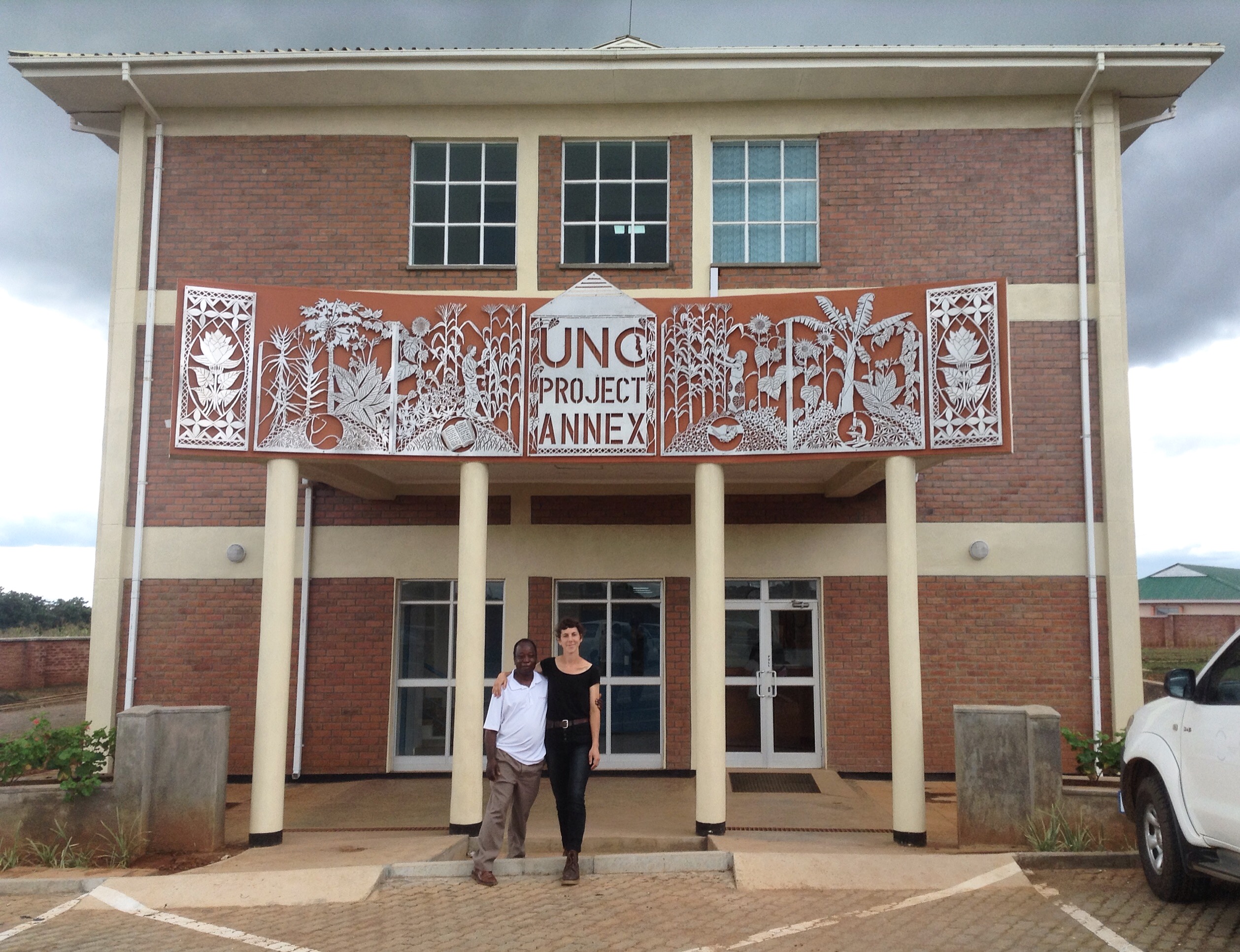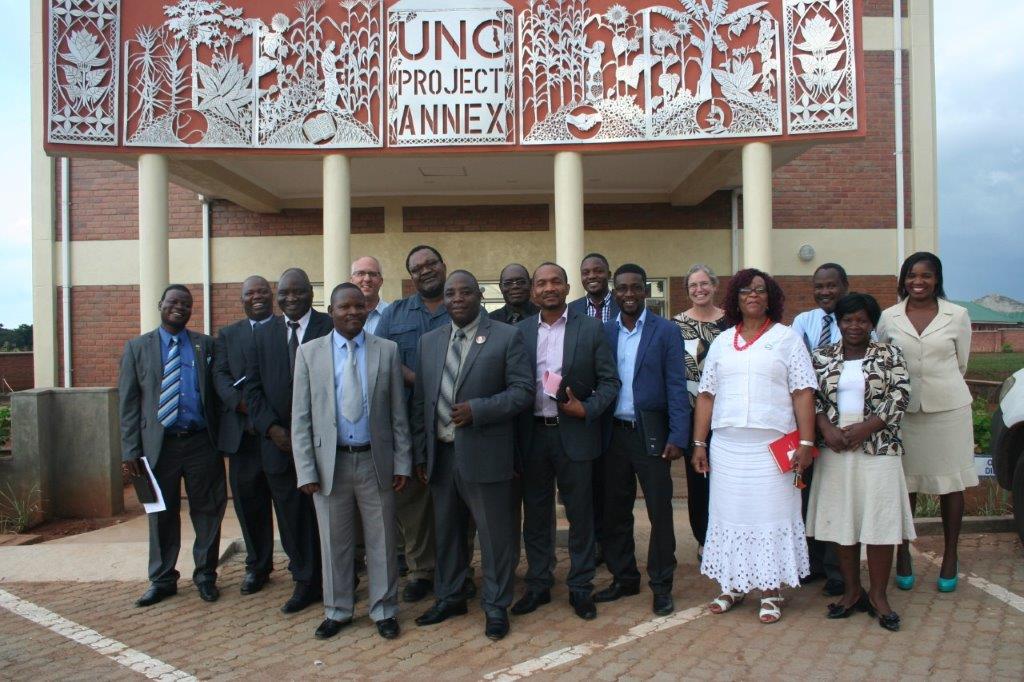An American and Malawian artist traveled around Lilongwe to find inspiration for the sign displayed on the latest addition of UNC Project-Malawi.


UNC Project-Malawi’s mission is evident thanks to a newly erected, intricately carved sign.
“There is a microscope, a stethoscope, a book and intertwined hands to show research, clinical care, training and collaboration,” said Michael Kapalamula, a Malawian artist who co-created the sign. “It is artistic, but at the same time it tells a story of the work being done here.”
Called the “UNC Project Annex,” the building’s ground floor on the Lilongwe campus houses a pathology laboratory and other lab services. The first floor includes teaching conference rooms and offices for the Project’s cancer program. Offices for faculty and UNC Project-Malawi’s management team are located on the second floor.
“The new building is helping support the growth of UNC Project-Malawi through providing 70 percent of the country’s population with cancer and pathology services,” said the Project’s Associate Country Director Innocent Mofolo, who organized the commission of the artistic sign. “This state-of-the-art 15,000 square foot building provides additional space for our continued collaboration with the government of Malawi to provide world class academic services focused on medical research, training and care.”
Just as Malawian and American clinician-scientists work together inside the building, Kapalamula collaborated with an American artist for the outdoor signage. A decade ago, he painted a vibrant mural in the Project’s main building, the Tidziwe Centre. Back then, 19-year-old American Elsa Hoffman was visiting the Project and assisted Kapalamula with his painting. Now an established metal artist in Chapel Hill, Hoffman traveled to Malawi to partner with Kapalamula on signage for the new building.
In early March, Hoffman packed her plasma cutter, a handheld torch used for cutting metal, and flew to Lilongwe. Once there, she and Kapalamula journeyed around the region taking photos reflective of daily life in Malawi to use as inspiration. Malawi is 85 percent rural and agrarian with a per capita income of under $2 per day. People are dependent on crop production for survival.
“We really wanted to be responsive to the environment in Lilongwe and capture people’s day-to-day reality,” Hoffman said. “There is a connection to the plants and fruits growing in that region. As we traveled around, people gave us suggestions for photographs. It really became a natural way to meet people and turned into this community project.”
Hoffman and Kapalamula took the photos they shot of sweet potato vines, banana trees and other local flora and began sketching a first draft of the sign. The final seven-panel design marries the region’s crops with the Project’s medical mission.
“The man and woman we cut into the sign are taking care of and harvesting the crops, just like research has to be done well and thoughtfully in order to achieve quality results for the benefit of the nation,” said Kapalamula. “We also included plants with medicinal properties like aloe vera, sunflower and potato leaves.”
Working with Hoffman again deepened their friendship and introduced Kapalamula to the metal cutting technique. He said learning this new skill was his favorite part of the creative process. It took a full week of intensive cutting to complete the stainless steel sign. Hoffman enjoyed seeing the shadows reflected on the building when the sunlight shone through the design.
“The sign is descriptive and illustrative of Malawian life,” Hoffman said. “People can see themselves in the design, which allows them to appreciate it a lot more.”
